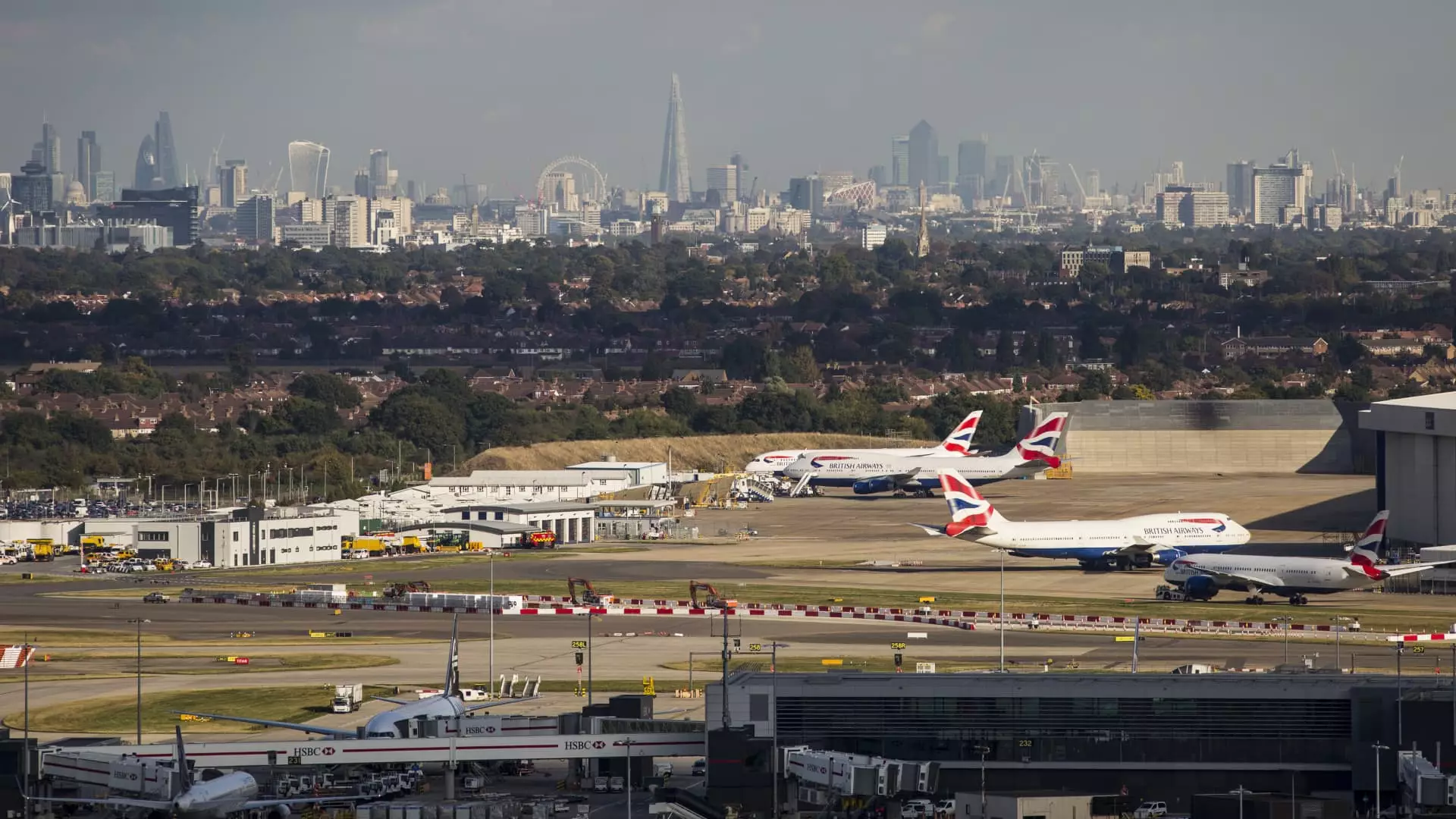The ongoing debate around the construction of a third runway at Heathrow Airport has reached a pivotal moment, with airport executives emphasizing the urgent need for expanded capacity. As the discussion evolves, various stakeholders weigh in, exposing conflicting interests that ultimately revolve around environmental, economic, and infrastructural considerations. This article delves into the complexities surrounding this high-stakes proposition while examining the tensions inherent in airport expansion efforts.
Thomas Woldbye, the chief executive of Heathrow, recently called for a definitive governmental decision regarding the third runway project by the end of 2025. He articulated the airport’s pressing need for increased capacity, asserting that the existing two runways are nearing their operational limits. Woldbye’s assertion, “Heathrow is running out of capacity,” underscores the critical nature of the airport’s growth needs. With projections estimating passenger numbers could soar to 90 million, the argument for expanding airport facilities gains traction.
While Woldbye presents a compelling case for expansion on the grounds of economic growth and the nation’s industrial strategy, it remains dubious whether the government will embrace such a significant infrastructure project. Many stakeholders—including local residents, environmental advocacy groups, and government officials—express concerns regarding the social and ecological implications of airport expansion. The need for consensus among various parties involved cannot be overstated, a point that Woldbye himself acknowledges.
Heathrow’s bid for a third runway has long been marred by public discontent and environmental backlash. Critics, including groups like Friends of the Earth, vehemently oppose the expansion plans, citing increased greenhouse gas emissions and potential harm to local ecosystems as pivotal reasons for their resistance. Furthermore, residents argue that the additional flights would exacerbate noise pollution and lead to heightened traffic congestion in an already densely populated area.
The persistent debates surrounding public sentiment illustrate the broader implications of infrastructure projects. The spectrum of perspectives—from proponents who champion economic benefits to opponents who highlight environmental degradation—demonstrates the complexities of modern developmental strategies. As Woldbye noted, “If the U.K. does not want a runway, why would it be built?” This poignant query underscores the importance of public discourse in shaping national infrastructure policies.
Given the magnitude of the proposed infrastructure project, the government must play an instrumental role in deciding its fate. Woldbye emphasized that while Heathrow is positioned as the main executor of the project, it is ultimately the government’s responsibility to guide transportation strategy. This reflects a growing recognition that significant infrastructural changes require cohesive planning aligned with national objectives.
U.K. Transport Secretary Louise Haigh echoed similar sentiments at the recent Airlines 2024 conference, indicating her willingness to support airport expansion as long as it aligns with economic and environmental commitments. However, achieving this equilibrium remains challenging, as policymakers grapple with a portfolio of competing interests ranging from airline profitability to environmental sustainability.
Rather than viewing the issue through a binary lens of expansion versus environmental protection, it is essential to recognize the multifaceted considerations at hand. The path forward necessitates a nuanced approach that balances economic aspirations with environmental responsibilities.
As the deadline for a governmental decision approaches, the implications of the third runway project hang in the balance. If approved, Heathrow will undertake one of the most ambitious infrastructure ventures in British history. However, if the government withholds its support, the airport’s ongoing capacity challenges may have far-reaching consequences for the airline industry and the U.K. economy at large.
Woldbye pointed out that, even without governmental backing, Heathrow is exploring alternative strategies to increase efficiency on its existing runways. While these measures may support a temporary solution, they cannot replace the necessity of a third runway in meeting the overwhelming demand anticipated in the years to come.
Overall, the decision surrounding Heathrow’s third runway encapsulates a microcosm of broader discussions on infrastructure development, environmental stewardship, and public sentiment. As debates continue and stakeholders engage in a careful balancing act among competing interests, the outcome of this multifaceted issue will set critical precedents for future transportation projects across the United Kingdom. The resolution of this contentious issue reflects not only on the future of Heathrow Airport but also on the broader themes of growth, sustainability, and community welfare in the context of infrastructural expansion.

